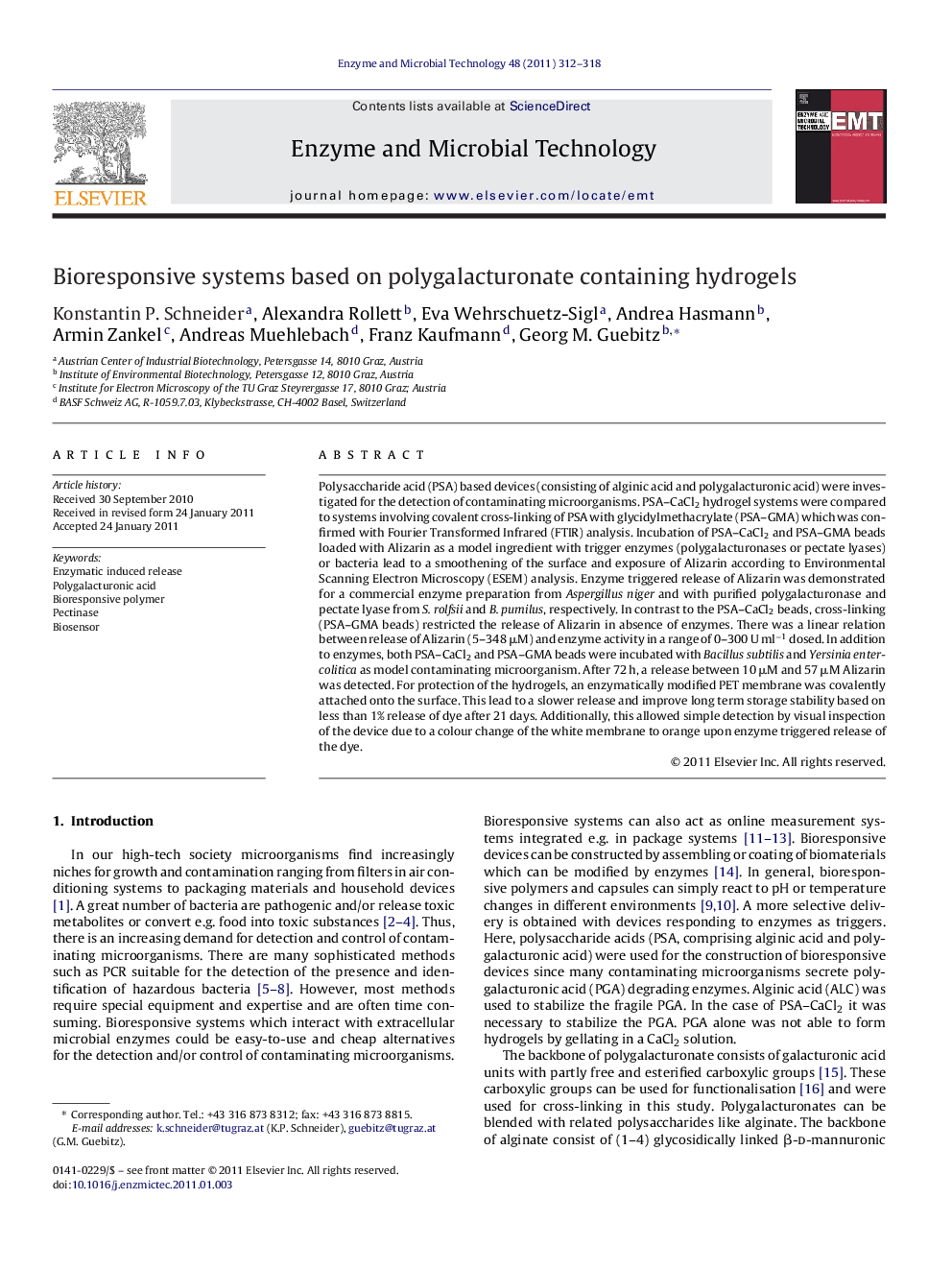| کد مقاله | کد نشریه | سال انتشار | مقاله انگلیسی | نسخه تمام متن |
|---|---|---|---|---|
| 17493 | 42673 | 2011 | 7 صفحه PDF | دانلود رایگان |

Polysaccharide acid (PSA) based devices (consisting of alginic acid and polygalacturonic acid) were investigated for the detection of contaminating microorganisms. PSA–CaCl2 hydrogel systems were compared to systems involving covalent cross-linking of PSA with glycidylmethacrylate (PSA–GMA) which was confirmed with Fourier Transformed Infrared (FTIR) analysis. Incubation of PSA–CaCl2 and PSA–GMA beads loaded with Alizarin as a model ingredient with trigger enzymes (polygalacturonases or pectate lyases) or bacteria lead to a smoothening of the surface and exposure of Alizarin according to Environmental Scanning Electron Microscopy (ESEM) analysis. Enzyme triggered release of Alizarin was demonstrated for a commercial enzyme preparation from Aspergillus niger and with purified polygalacturonase and pectate lyase from S. rolfsii and B. pumilus, respectively. In contrast to the PSA–CaCl2 beads, cross-linking (PSA–GMA beads) restricted the release of Alizarin in absence of enzymes. There was a linear relation between release of Alizarin (5–348 μM) and enzyme activity in a range of 0–300 U ml−1 dosed. In addition to enzymes, both PSA–CaCl2 and PSA–GMA beads were incubated with Bacillus subtilis and Yersinia entercolitica as model contaminating microorganism. After 72 h, a release between 10 μM and 57 μM Alizarin was detected. For protection of the hydrogels, an enzymatically modified PET membrane was covalently attached onto the surface. This lead to a slower release and improve long term storage stability based on less than 1% release of dye after 21 days. Additionally, this allowed simple detection by visual inspection of the device due to a colour change of the white membrane to orange upon enzyme triggered release of the dye.
Journal: Enzyme and Microbial Technology - Volume 48, Issues 4–5, 7 April 2011, Pages 312–318